Triumph Engineering Co Ltd was a British motorcycle manufacturing company, based originally in Coventry and then in Meriden. A new company, Triumph Motorcycles Ltd, based in Hinckley, gained the name rights after the end of the company in the 1980s and is now one of the world's major motorcycle manufacturers.

The Triumph Triples are a family of modern DOHC inline three-cylinder motorcycle engines made from 1990 onwards by the Triumph Motorcycle Company at their Hinckley, Leicestershire factory. The inspiration for the later triples was the pushrod Triumph Trident, produced from 1968 to 1974 at the Triumph factory at Meriden Works.

The Triumph Thunderbird is a British motorcycle that was introduced by Triumph back in 1949 and produced in many forms until 1966. The name was used three more times for new and distinct Triumph models.

The Triumph Trident and BSA Rocket 3 was a technically advanced, high-performance roadster motorcycle made by Triumph Engineering and BSA from 1968 to 1975, and sold under both the Triumph and BSA marques. Alongside the Honda CB750, and later the two-stroke Kawasaki triples, it brought a new level of sophistication to street motorcycles, marking the beginning of the superbike era. The Honda CB750 overshadowed the Trident to be remembered as the 'first superbike', in spite of the Triumph Trident actually debuting before the Honda by a few weeks.

The Triumph Bonneville is a standard motorcycle featuring a parallel-twin four-stroke engine and manufactured in three generations over three separate production runs.
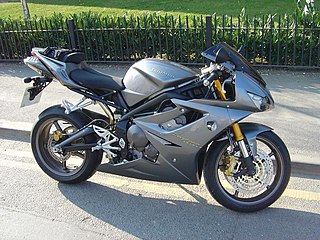
The Triumph Daytona 675 is a three-cylinder sport bike built by Triumph Motorcycles. It replaced the four-cylinder Daytona 650. The 675 proved to be remarkably light, nimble and powerful; at a maximum of 128 bhp it was also very quick, and it was very successful against the Japanese 600 cc competition. In 2016, Triumph ceased production of the base model Daytona 675 citing diminishing demand for super sport bikes and increasingly strict European emission standards. Triumph continued to produce the up-spec Triumph Daytona 675R model until the 2018 model year. Triumph filed a new trademark for the Daytona, fuelling rumors that there may be a future version sporting the new 765 cc engine. It turned out to be a 660, released in 2024.
Norton Villiers Triumph (NVT) was a British motorcycle manufacturer, formed by the British government to continue the UK motorcycling industry, until the company's ultimate demise.
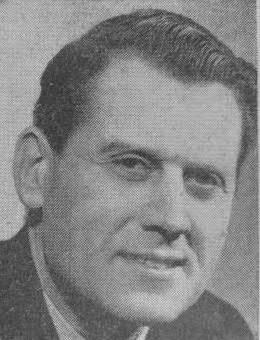
Douglas Lionel Hele was a pioneering British motorcycle engineer with Triumph and other firms: BSA, Douglas and Norton. He was born in Birmingham in 1919 and died in Hagley, Worcestershire on 2 November 2001.

The T140W TSS was the last motorcycle model made by Triumph Engineering at their Meriden factory.

The Triumph Thruxton is a series of British motorcycles with parallel-twin engines and sports styling. The name Thruxton was first applied to a handbuilt machine for endurance racing in the mid-1960s, and later revived in the 2000s.

Triumph Motorcycles Ltd is the largest UK-owned motorcycle manufacturer, established in 1983 by John Bloor after the original company Triumph Engineering went into receivership. The new company, initially called Bonneville Coventry Ltd, continued Triumph's lineage of motorcycle production since 1902. They have major manufacturing facilities in Thailand.
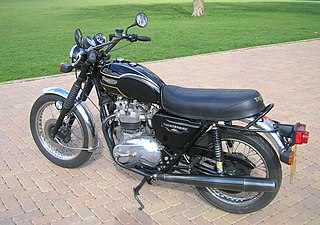
The Triumph TR65 Thunderbird is a motorcycle made by the Triumph worker's co-operative at the Meriden factory from 1981 to 1983. The TR65 was a reintroduction of the Triumph Thunderbird model name first used on the original 6T Thunderbird of 1949. A short stroke model, the Daytona 600 was designed in 1983 but not produced.

The Triumph TSX was a British motorcycle credited by the factory as being designed in 1981–1982 by Wayne Moulton, president of Triumph Motorcycles America(TMA), the factory's American arm. This is the only instance of Triumph's signature twin cylinder models being designed by an American.
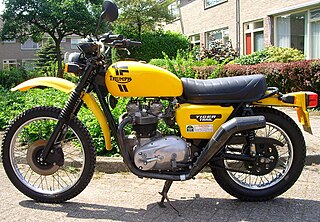
The Triumph Tiger Trail was a motorcycle model manufactured by Triumph Motorcycles at the Meriden factory. The Tiger Trail was made from 1981 to 1982 in both 750 cc (TR7T) and 650 cc (TR65T) capacities, and under 180 examples were built. Emission regulations precluded export to the USA but otherwise the model was available to all Triumph's other markets particularly in many British Commonwealth nations and western Europe.

The TR6 Trophy is a motorcycle that was made by Triumph, in Meriden, from 1956 to 1973, when it was replaced by the five-speed 750-cc Triumph Tiger TR7V. During this time, it was a successful model, particularly in the US. The competition variant, popularly known as the "desert sled", won numerous competitions throughout the late 1950s and 1960s. Steve McQueen's fondness for the model is well known, as is his participation in the 1964 ISDT on a TR6 Trophy.
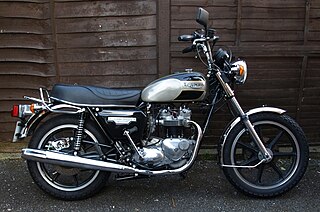
The Triumph Bonneville T140 is a standard motorcycle with a 750 cc (46 cu in) capacity engine that was designed and built by Triumph Engineering at Meriden near Coventry.
Brian Jones was a motorcycle designer and engineer born in Gloucester, United Kingdom in 1928. Notable for his contribution to the original design of the Triumph Bonneville, he died in Coventry, on 4 March 2001.
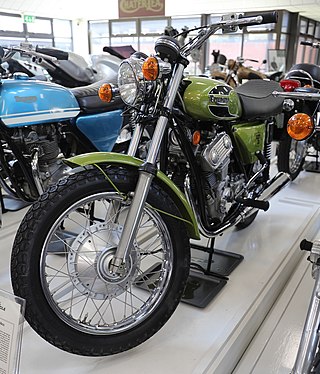
The Triumph Bandit was a British motorcycle manufactured as a prototype by Triumph in 1970. Originally designed by Edward Turner as his last project it was subsequently substantially modified at Triumph by a greatly critical Bert Hopwood and Doug Hele. Despite their work, the Bandit never went into commercial production, and only five have survived, making them very rare.

BSA motorcycles were made by the Birmingham Small Arms Company Limited (BSA), which was a major British industrial combine, a group of businesses manufacturing military and sporting firearms; bicycles; motorcycles; cars; buses and bodies; steel; iron castings; hand, power, and machine tools; coal cleaning and handling plants; sintered metals; and hard chrome process.

The Triumph Daytona and Daytona Super 3 is a three or four-cylinder British sports motorcycle. These bikes were produced from 1991 to 1996 at Hinckley, Leicestershire, England, by Triumph Motorcycles Ltd, the successor business to the defunct Triumph Engineering at Meriden Works, Warwickshire, England.


















